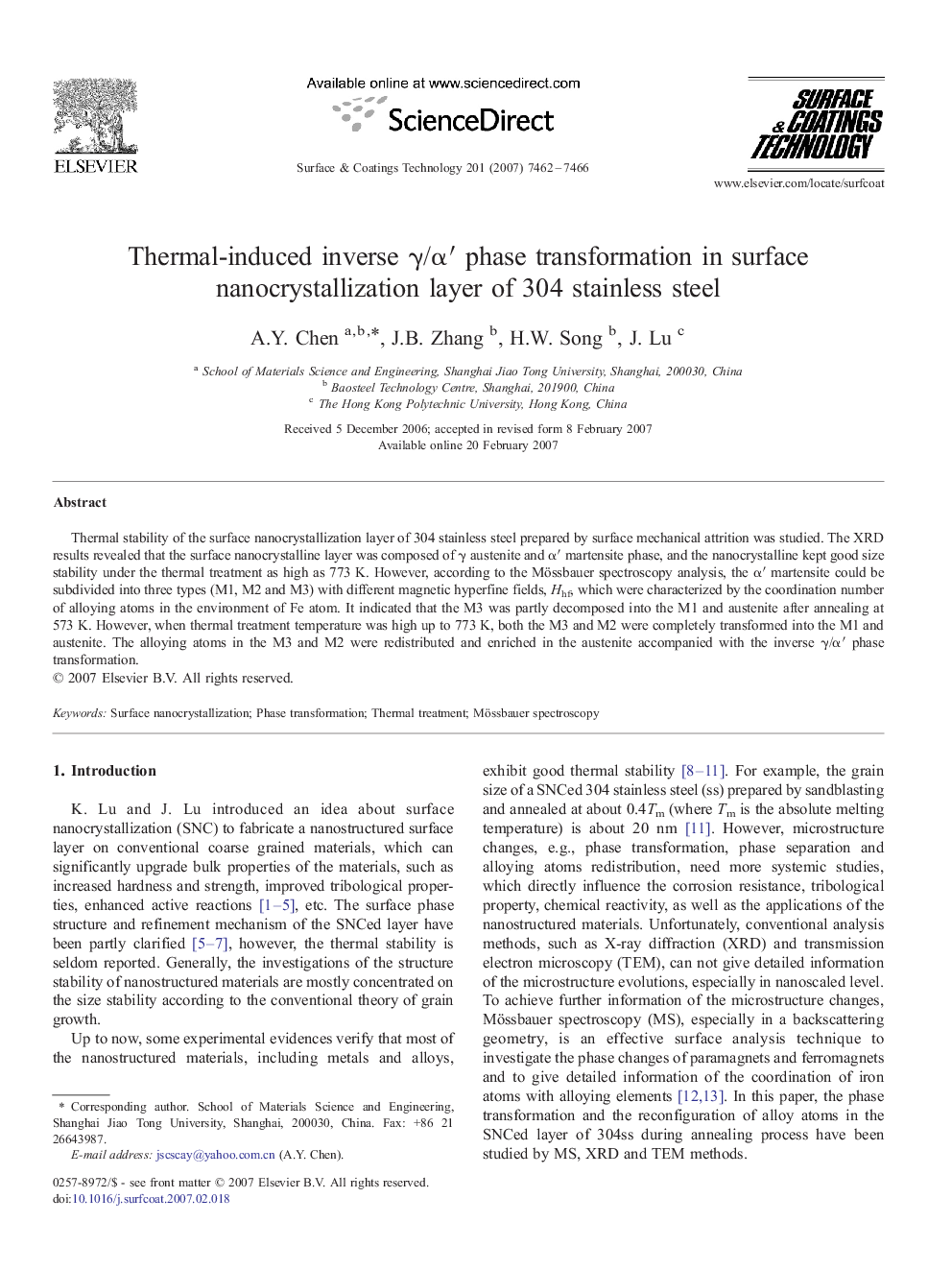| Article ID | Journal | Published Year | Pages | File Type |
|---|---|---|---|---|
| 1662424 | Surface and Coatings Technology | 2007 | 5 Pages |
Thermal stability of the surface nanocrystallization layer of 304 stainless steel prepared by surface mechanical attrition was studied. The XRD results revealed that the surface nanocrystalline layer was composed of γ austenite and α′ martensite phase, and the nanocrystalline kept good size stability under the thermal treatment as high as 773 K. However, according to the Mössbauer spectroscopy analysis, the α′ martensite could be subdivided into three types (M1, M2 and M3) with different magnetic hyperfine fields, Hhf, which were characterized by the coordination number of alloying atoms in the environment of Fe atom. It indicated that the M3 was partly decomposed into the M1 and austenite after annealing at 573 K. However, when thermal treatment temperature was high up to 773 K, both the M3 and M2 were completely transformed into the M1 and austenite. The alloying atoms in the M3 and M2 were redistributed and enriched in the austenite accompanied with the inverse γ/α′ phase transformation.
